It’s 81°f (27.22°c) in South Florida. With heat on the rise, my palate is definitely springing forward – grilling and chilling with a glass of rosé in my hand and swapping out carbs for arugula (my favorite leafy green), avocado and roasted or sautéed vegetables.
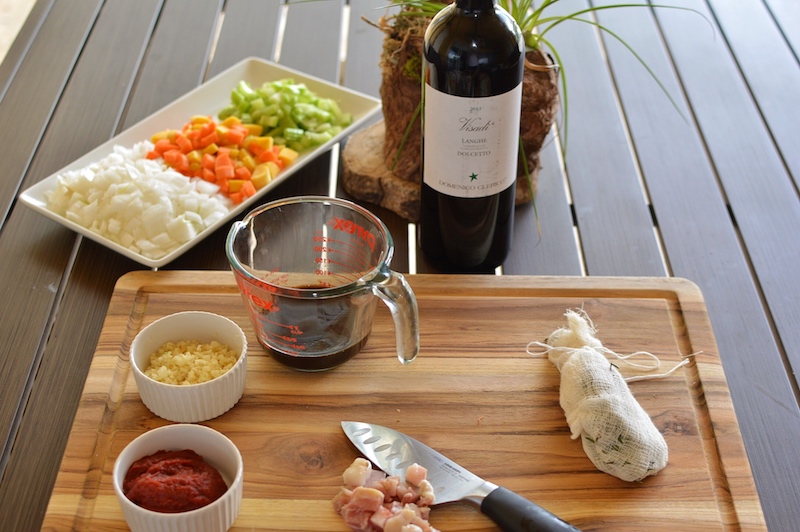
However, today it’s Sunday and after two consecutive, long runs, I’m ready to fall in the pot. It’s hot out though and having the oven on for three or four hours will kill the a/c bill. TG for YouTube that gives me a quick lesson on how to braise on a grill. My Weber has good temperature control and cast iron pot is the perfect size.
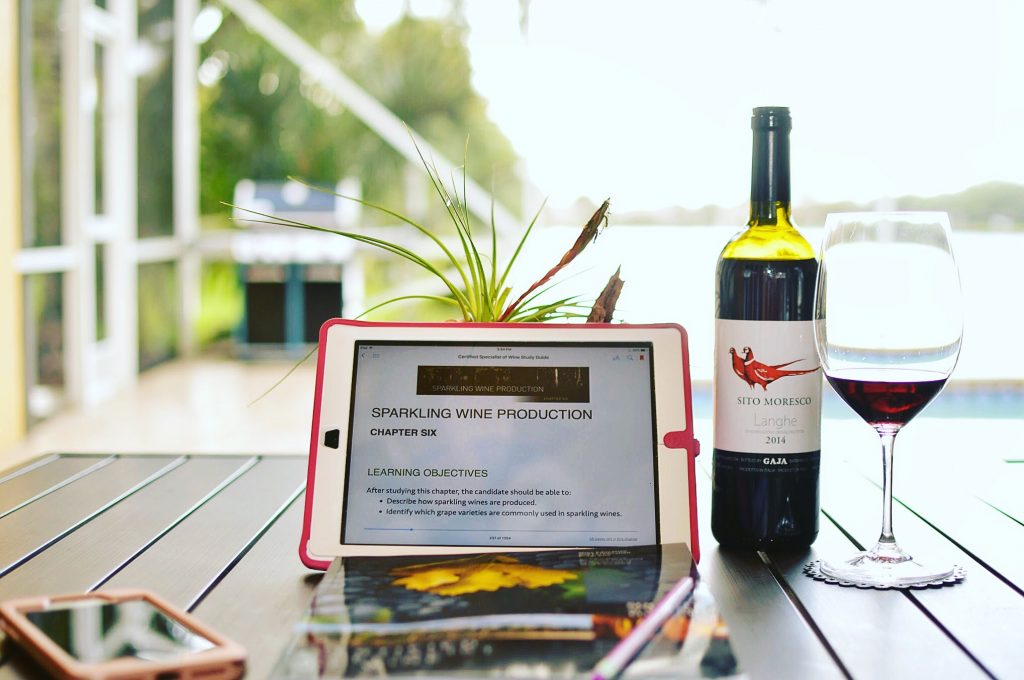
I’m now ankle deep into the CSW textbook (chapter 6 to be exact), testing myself each day using Quizlet lessons and flashcards and feeling a little more confident about the content. It’s not easy though and although I read and write every day for work, self-study at this level has been a struggle.
The Dish: Braised Beef Ragu with Pappardelle Pasta
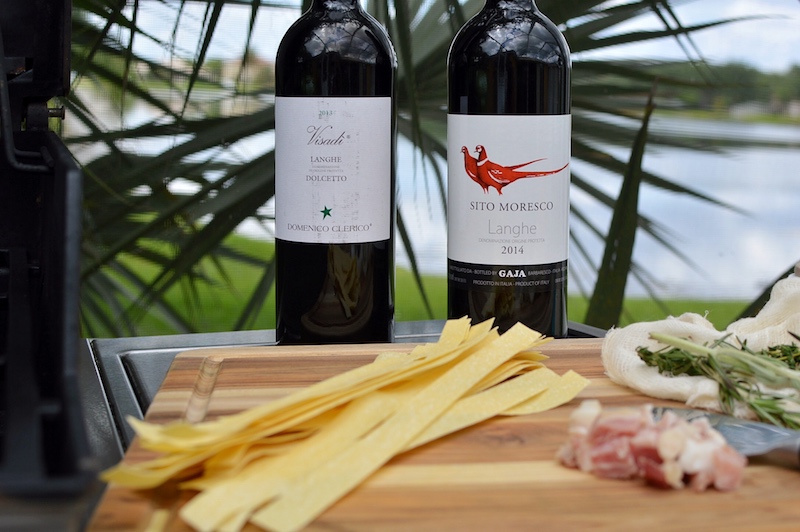
Pappardelle is a word nerd/foodie plaything. Derived from the Tuscan dialect word ‘pappare’ which means to gobble up food, it’s like Italian onomatopoeia. Just slurp up those tasty, wide egg noodles straight from the pot, p,p,p, pappare! Read more here.
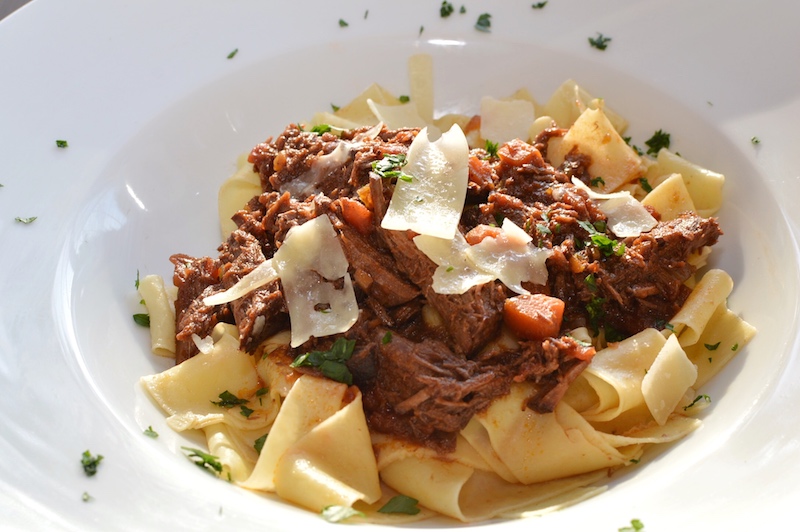
There are many recipes for beef ragu to be found and most are similar. I chose this one. There’s something very relaxing about a slow cooked, Sunday meal. During the week, the long prep time alone is unmanageable. However, I love taking the time to wash and chop knowing that the holy trinity of cooking, (also called mirepoix in French and soffritto in Italian) onions, carrots and celery 2:1:1, is the foundation of all things yummy. The greatest thing is that once everything is in the pot, you have at least three hours to read a book, watch a movie or take a nap!
The Wine: Gaja Sito Moresco Rosso Langhe 2014
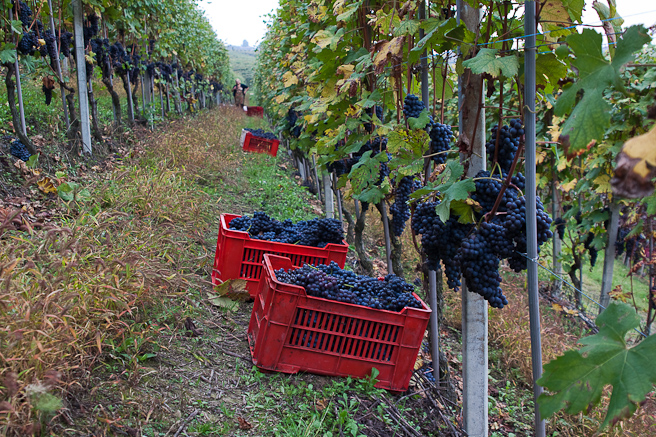
Google Gaja (the family and winery name) and you’ll quickly find out that the wine I chose is on the cheaper side of the Gaja skew. And, if you’re a wine collecting aficionado, you may be turning your fine-tuned nose up at my choice. However, wine newbie me says this wine is great value wow! It’s a blend as opposed to a varietal (single named grape variety) and composed of Nebbiolo (the prized grape of the region, Piemonte), Merlot and Cabernet Sauvignon. Other years or vintages when referring to wine, seem to have a small percentage of one of the region’s other indigenous grapes, Barbera.
So, let’s discuss what’s up with the Nebbiolo fascination and what goes into the name?
There’s a plethora of information about the Nebbiolo grape and the most sought after wines of the Piemonte (aka Piedmont: the region), Barolo (an appellation) aka the king of wines and Barbaresco (another appellation). There’s scholarly articles, heated debates and even a movie: Barolo Boys.
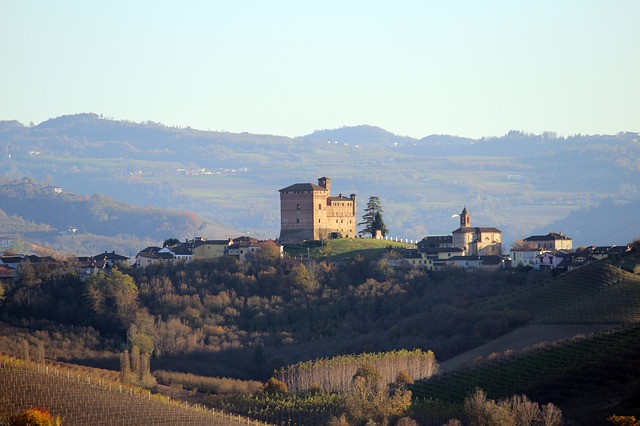
In my pursuit of wine knowledge, here’s what I found most interesting about this thin-skinned grape. Unlike Cabernet Sauvignon (red) or Chardonnay (white) that can be planted almost anywhere in the world and acquire new characteristics depending on where it has been planted, the Nebbiolo grape does best in not just its country of origin, but its specific area which is Northwest Italy. This gem loves its own soil and doesn’t develop anywhere near to as good, elsewhere.
I could go on and on, but it’s best that I leave Nebbiolo history and the wine facts to the experts. An enjoyable start can be seen in this video. Dig deeper and you’ll be amused by all of the old school and new school banter.
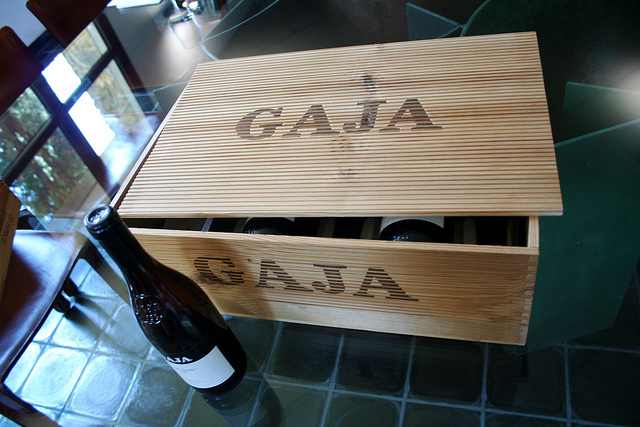
As for the name, I’m learning that the winery is much more than a brand. Gaja has a long history and world-renowned reputation. Angelo Gaja was a bold, risk taker who broke away from the old traditions and tried seemingly blasphemous new approaches to winemaking. Angelo along with his wife and grown children manage everything together. I enjoyed reading this Wine Spectator article where he and his daughter Gaia discuss climate change and its impact on wine production.
I’m more of a #YOLO, drink-now and budget conscious wine newbie. However, if you have the means and patience to wait, certainly start your collection with one of their wines. Read more about the Sito Moresco here.
The Metaphor

My parents were immigrants. My mother at eighteen was ready to jump solo on a ship from England to Canada as part of a migration incentive program. Her Mom wasn’t so anxious and followed her, dragging two unwilling siblings on the long, Atlantic crossing. Mom never looked back. My Dad on the other hand, left his birthplace to find work opportunities in Canada. He spent his whole life wanting to return. On one of his annual visits back to his country, he died suddenly. Doing what he loved most, gardening, I have to believe that he passed happily.
I like many of you are transplants. We get cut from the vine of our birthplace and are grafted somewhere else. We thrive and survive as a different version of ourselves. Whereas we think we might not belong anywhere else, it is almost always possible.
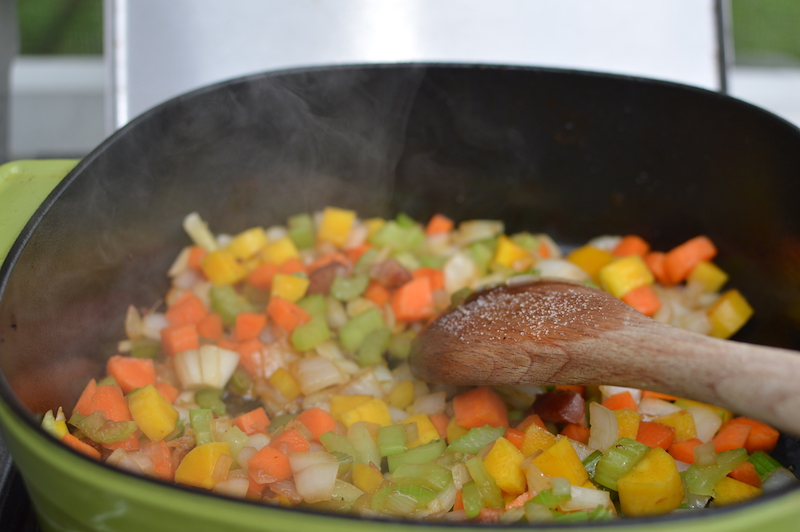
The trilogy of grapes or vegetables in today’s dish demonstrates the beauty of blends. Each component brings color and character to the medley. We, like those components, do not lose our distinct flavor, but contribute to something richer.
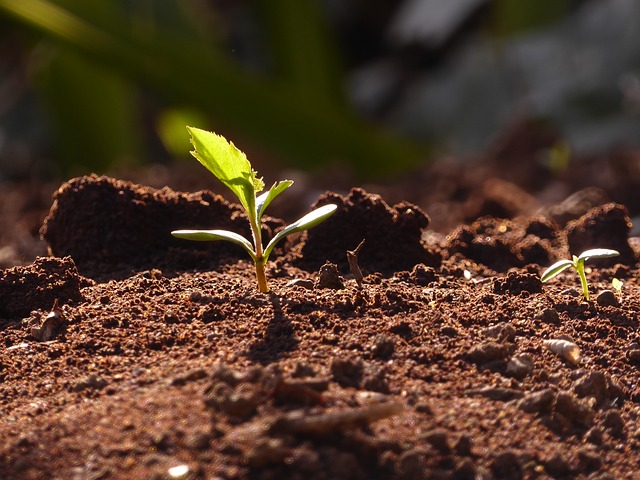
“In the spring, at the end of the day, you should smell like dirt.” ― Margaret Atwood, Bluebeard’s Egg
Until next time, swirl and breathe deeply into your glass. As the aroma rises, think fondly about the dirt to which the grape came from and where it will go.
#MyArtEscape @AllegoryPR
NOTE: This Blog post was inspired by Chapters 3 and 4 of the Certified Specialist of Wine Guide. Both wines mentioned are from the Langhe wine region in Piemonte. The wine I cooked the beef with was (Dolcetto) Domenico Clerico Langhe Dolcetto Visadi 2013. A very reasonable price for a good wine that I will definitely drink rather than cook with next time!
